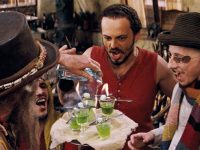
Alice, created by Lewis Carroll and made into a movie by Walt Disney (and some more recent adaptations that we’d better not remember), is one of the most iconic characters in children’s stories. Every fantasy needs something to inspire it, and Charles Lutwidge Dodgson (Lewis Carroll’s real name) was no exception. The Alice in the story is a transposition of Alice Lidell, the daughter of the Dean of the Christ Church School in Oxford, where Lewis Carroll taught mathematics. Alice and her sisters would go on excursions with the writer and he would make up stories to entertain them. Those stories were the seed of what would later become his novels, but the real life story did not have a happy ending. In June 1863, the relationship between Lewis Carroll and the Liddell family ended abruptly. Lewis Carroll’s diary pages for 27, 28, and 29 June were torn out by one of the writer’s nieces. Alice’s father’s diaries also disappeared, so we will never know the reason for the fight between Lewis Carroll and the parents of the real Alice. We know that Carroll and Alice had a very special relationship, but we have never been able to prove that there was any kind of romantic attraction.
The seeds for other characters in the book are easy to trace in context. The mad hatter was based on the English expression «mad as a hatter». Hatters used mercury vapours to treat leather and felt. Exposure to these fumes produced neurological damage and symptoms that people associated with madness.
«Alice goes on a journey during which peculiar characters tell her what to eat or drink. Then, strange things happen»
When one considers the Disney movie, one aspect stands out. Alice goes on a journey during which peculiar characters tell her what to eat or drink. Then, strange things happen: flowers start talking to her, or she grows or shrinks in size. One of the characters is a worm who smokes a strange water pipe on top of a mushroom and another is a cat with psychedelic colours who appears and disappears… Doesn’t all this seem like a drug-induced psychedelic journey? Lewis Carroll lived through the heyday of legal opium use, but, once again, the result seem inconclusive. There is no evidence that the writer frequented opium dens or wanted to make any kind of statement in favour of drug use, even though, watching the Disney film, the analogies are quite obvious.
Psychedelic drugs have had a great impact on culture. The discoverer of LSD, Albert Hoffmann, tested the effects himself. On the first scientifically documented trip, he said that when he arrived home and the housekeeper opened the door for him, she looked like a wicked witch to him. Many beat generation authors were enthusiastic users of LSD, and recently food writer Michael Pollan has also written about his experience with the drug. That is the only way to understand his peculiar claims about natural and ecological foods. In spite of myths and their impact on culture, LSD and all psychedelic drugs are dangerous. Besides altering perception and producing the characteristic effect of expansion of the senses, let us not forget that they inhibit our self-preservation instinct, which makes us look both ways before crossing a road. Under the effects of LSD it is common for people to have fatal accidents while trying to fly by throwing themselves out of a window or crossing a highway levitating. If we want to have a cultural experience, we better read Alice in Wonderland or watch the Disney film again.





